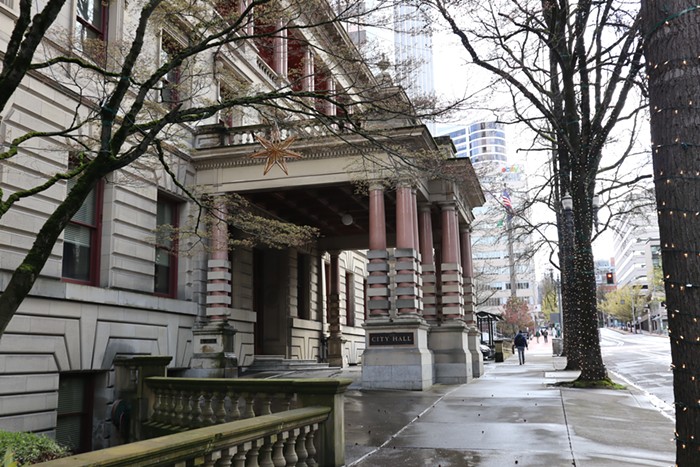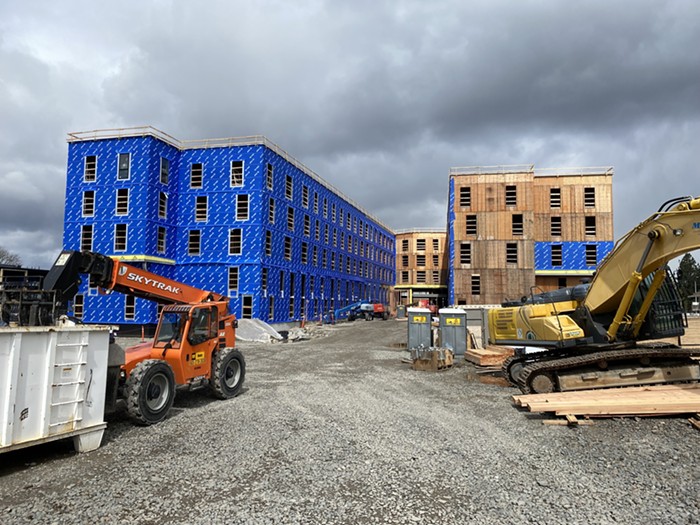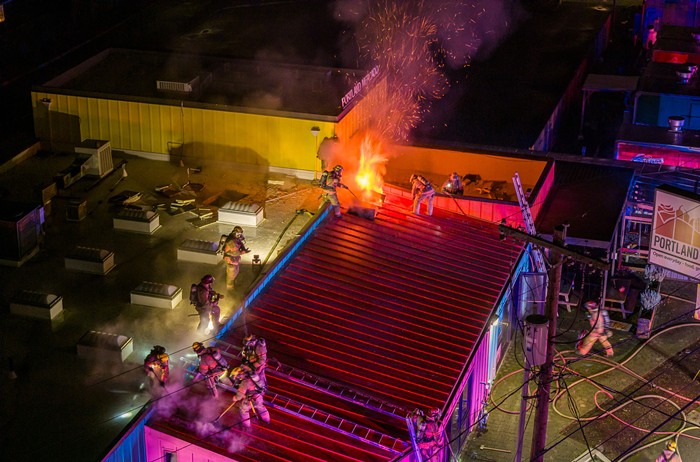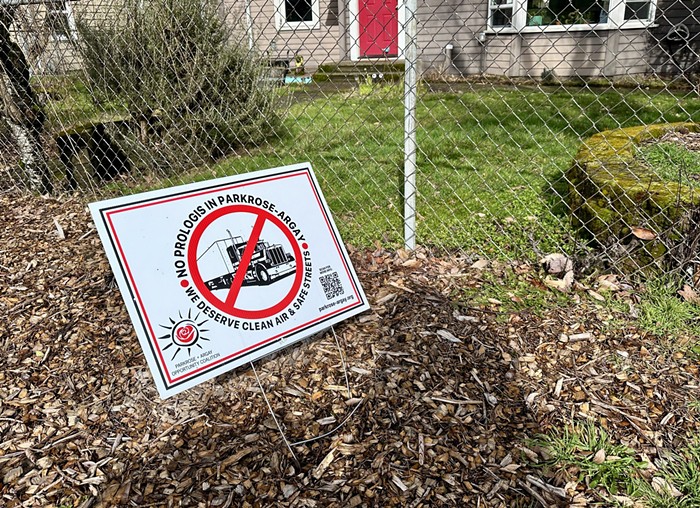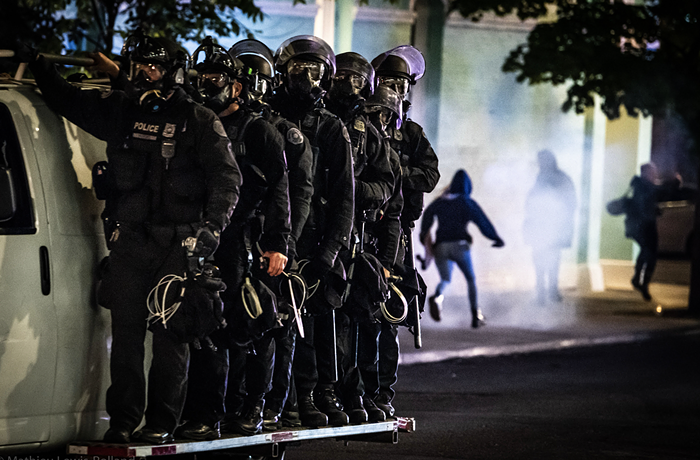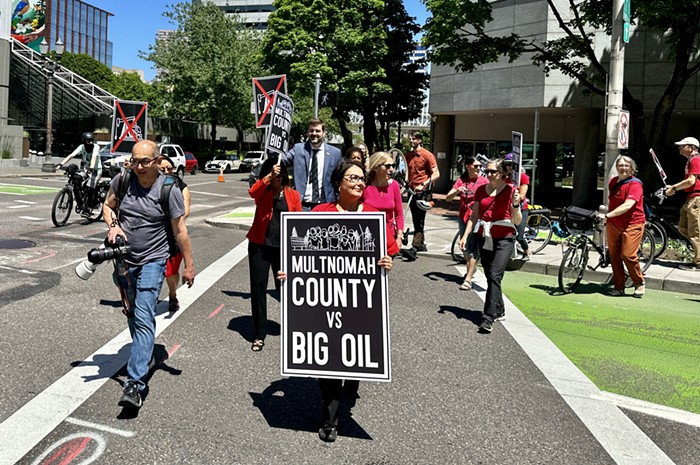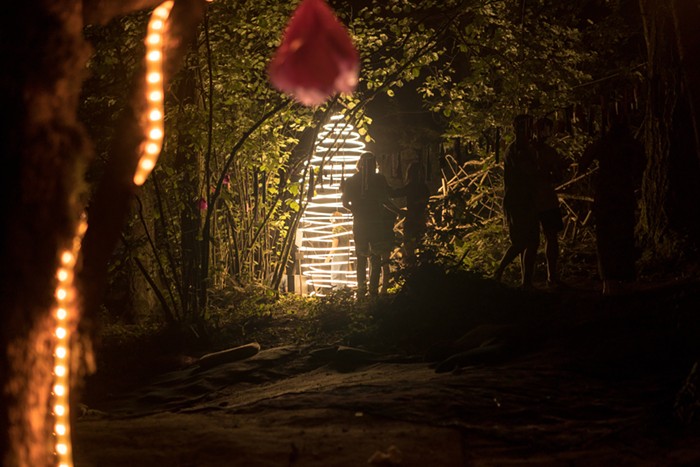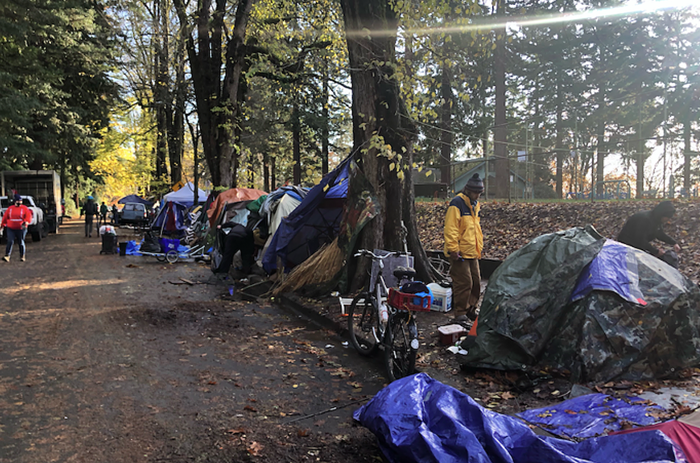[Editor’s note: As Portland and cities around the country celebrate International Women’s Day with protest this year, Portland’s caught in a fight over how exactly its own protests should be carried out. That push-and-pull is not just between protesters and police. It’s a debate between demonstrators and citizens exhausted by traffic snarls, and a difference of opinion between people who see marching as vital to maintaining democracy and those who believe it accomplishes nothing. With this in mind, we’re running this essay by local writer Olivia Olivia.]
PORTLAND AND THE NATION are caught in crisis.
We are, as many have noted, in a time of openly fascist leadership and white supremacist ideology. So naturally, many of us think back to images of our civil rights heroes, and we march.
But what does that mean against the powers that be, and are we using outdated means to counteract an evolved enemy?
The powerful history of the march speaks for itself. When America depended on the silence and shame of African Americans in order to brutalize them, the idea of a nonviolent protest evolved as a way to expose the truth. People with cameras showed up, filming hours of damning footage of police attacking unarmed people. It had a strong effect, but white supremacy has changed.
The media—then and now—has a narrative about marches: that they are inconvenient, that they are violent, that they destroy public property and create delays for “hardworking people,” a group that the protesters surely are not an acknowledged part of. While the rest of us work, Trump tells us, these young “agitators” and “paid protestors” take to the streets, meaninglessly destroying things.
In response, the left is stuck trying to defend itself (“No, this is a peaceful protest, not a violent one!”) and fails to call out an inherent flaw in this propaganda: Material objects will be replaced by businesses our politicians have their hands in, but Black children murdered by police do not have that recourse. Nor do immigrants or any other human beings.
There is no such thing as a nonviolent protest because poverty is violence, deportation is violence, bankruptcy due to medical bills is violence, indestructible student debt is violence, evictions are violence, hunger is violence. If the left becomes paralyzed trying to decide who within it is truly “violent,” it loses the battle from the beginning.
The red herring is a broken bank window—the forgotten cause is the dead child, born on the streets to a mother that was too poor to access medical care. There is no insurance in the world that can replace her loss, or ours.
But we need to ask: Does marching still change the hearts and minds of our politicians or fellow citizens? How does it serve us?
Years ago, when the Black Panthers marched in the streets, it was because they had done more for the streets they marched on than the government had. They stepped in when mayors and landlords and officials had slacked. They fed children, they filled potholes, they prevented evictions, and they hosted free dental clinics and offered medical care. The streets were in many ways theirs.
Today, we have put the cart before the horse. We march, but what have we done to merit our time out there, and what are we pressuring the city to do? What is the goal?
I’d argue the march today is bordering on being obsolete. If three million people can march without any material changes to the government that is exploiting them, then we have had a parade, not a demand. Visibility is dangerous, not heroic. Today people who are seen as leaders get killed (like indigenous Honduran environmental activist Berta Cáceres), wiped out, bought up, or are never that radical to begin with. The power they seek is inseparable from the visibility and negotiations they want to pass through them.
We can agree that we need change. We do not want people to go hungry, so we must feed our poor. If you cannot feed them, you support those feeding them—by socially upholding their actions, or encouraging that behavior in your peers.
If the mayor will not protect our immigrants, we must do it. Surround the local courthouse, stopping any more ICE officers from detaining our refugees. Find churches and other sanctuaries for them. Feed them. Ensure they can safely attend religious services and access resources that you help create for them. Portland can call itself a sanctuary city, but if it lets ICE agents take away our neighbors, we are participating in a system that will move on to another target next.
This perhaps is less glorious and romantic, but when we want change we must create it.
People should come to associate the presence of you—black bloc, pink hats, red scarves—with material change. They should know when you appear, the cops cannot hurt them, they will not go hungry, the city and the nation will come to a standstill because you care about them and will not leave until this is fixed. March and say to yourself, “the goal of this march is to convince City Hall that we will not accept this action, and we’re not leaving until this action takes place, and if you fail us we will return and continue to hold you accountable.”
Remember, always: Our officials are our employees. You do not need permission or a permit to fire them. If they are not doing their job if they are hurting the company (you), and if they are killing your neighbors but not paving the streets, you can and should hold them accountable.
They have used money and influence to suggest the only way to hold them accountable is by voting every so often. They let you march peacefully and urge you to waste your energy in meaningless displays as long as you don’t come to their homes or disrupt their offices.
But at the end, there are still more of us than there are of them. The peoples’ will be done—and it will not begin, or end, at a march.
Olivia Olivia is a Salvadoran refugee and author of No One Remembered Your Name But I Wrote It Down. You can follow her writing at oliviawrites.com, and on Twitter at @writeswrongs.
